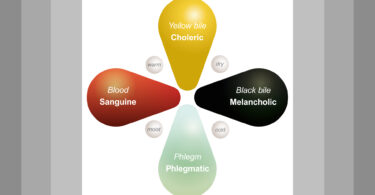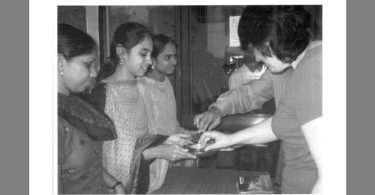Transcription by Raul Ibarra, M.D. This article is complementary to Hahnemann´s Periodicity of Chronic Diseases, and related to Allergies.
Diseases frequently recur annually. That is so generally established as a fact, it will not and cannot be denied. The cause has been said to lie in the variation of the seasons. We have, besides, the various idiosyncrasies and susceptibilities of men, one being affected in this way and another in that; but many being affected alike, the readiest cause to be assigned is the weather. It cannot be denied that many things happen simultaneously with a change of weather or follow immediately upon it; but that the weather is the cause of them cannot always safely be asserted. Post hoc is not always propter hoc. Specific, definite causes of disease, poisons of all kinds, are, however, far more powerful than these universal influences. We must watch these with special attention, and collect everything that relates to them, and we shall then be in the way to do more for our art and more for our future science than in any other. Repetition, however, is indispensably necessary. Although a single fact, which can only be explained on a single supposition – for example, a case of decided cure from high potencies, is worth more than ten thousand careless observations where they did not help, inasmuch as one positive fact cannot be outweighed by the negations of a whole race through all its generations. Still it is not probable, though quite possible, that such a fact could ever be established beyond the possibility of cavil. Whenever a phenomenon, however, depends upon a law, it will not be without confirmation, and what is true must ever remain and be true.
A hundred careless, slovenly, self-satisfied, dogmatical relations do not approach the value of a single, sound, acute, true and accurate observation. We have something more to do than to count the number of the cases. Repetition is necessary, because it is only then that we obtain a periphery from which we may calculate the central point. If this can be done from a single fact, repetition is taken for granted; the same effects must always follow under the same conditions, that is, ” Recurring Phenomena” must be referred to a law. Then we can reason humanly, as we above stated; first analytically, afterwards synthetically, and so on. In this way either confirmation or errors will accumulate; it cannot be otherwise. There is no middle ground; and this is the road to truth, and the only sure one. If in any point we should chance to be in error, let us go on investigating further and further, proceeding from one point to another, and even reasoning strictly and logically from effect to cause and law; and from these back to the phenomena, and the error will by and by increase to such a degree as to form a mountain of absurdities, which will soon find and disappear in its own abyss. We need no watchman to warn us of this event; it is easy to predict it, as I have often done, and to get out the way of the falling mass.
Before I had proved the poison of serpents, I had already heard various accounts of the annual return of sickness in those who had been bitten. I did not introduce them into my collection because I had never been able to observe any facts of the kind. It was a prevalent opinion in South America, and I found the same notion existing in the northern continent. Schott, Carper, and McCall had seen cases, and I devoted eight lines to their testimony. Lenz related the same, and a remarkable case of Burgers, in which the disease returned – the 2nd and 3rd year in a man bitten by a dog. Treiss relates the case of a woman bitten by a poisonous viper, in which the symptoms returned for 4 years consecutively . Schoot gives a case of annually recurring epilepsy after a snakebite. I am satisfied that the students of African or Eastern books of travel will be able to increase largely the number of these cases. If we were now simply to conclude from these relations that the snake poison might be employed therapeutically in similar cases with an ” Annual Periodicity “, this would be a very lame and impotent conclusion, although it might be very satisfactory, and confirmed to me and other by the facts of fever and ague. In the appropriate cases, however, other remedies may help, and the snake poison remains without effect, even in those cases in which the periodicity had not been observed. Let us first examine whether the same thing does not take place with other remedies. It is a well understood matter that those poisoned with Rhus-tox are sometimes affected with similar symptoms on the “Return of the particular Season ” of the accident in the “Subsequent Year”, even if they do not go outdoors. This is not universal, but only now and then, and happens at “all Seasons, from Spring to Fall”.
I have been told that there are other plants which produce cutaneous eruptions, in which the same fact has been observed. In the Allentauner Correspondenz-blatt, is a communication from a very cautious physician, which, although, so far as I know, unexampled, is nevertheless indisputable. A child was vaccinated without result. The next year the same child was vaccinated by the same physician, but on the other arm; the vaccination took, but the vesicle appeared on the old spot and not on the new one. I remember several similar instances, which I would here introduce, where they were not buried under cartloads of cases which are waiting their resurrection. Instead of relating from imperfect memory, I will mention a single case, which I shall always have good reason to remember, not only with perfect distinctness, but horror. When I was proving Mezereum, designedly selecting the time of its commencing bloom, and foolishly and unnecessarily poisoning myself, as many are now doing with other remedies, I experienced the symptoms ( Archiv IV, 2, S, 142 , Symp. 201 – 202, Hahnemann´s Chronic Krank. 4, 221, and 226 ) so violently that I underscored them seven times. I neglected however, carefully to note the subsequent effects; they were such horrible pains in the stomach that I have never forgotten them.
I had never had anything like them before, nor my parents or grandparents. They were due to the remedy. They continued for months, and then ceased. On the same day of the next year, they returned with horribly intensity, in attacks which continued to recur for six months; they disappeared, I trust forever, after a sea voyage. I had in the meanwhile proved other remedies, such as Plumbum, Sabina, etc. In the whole of ancient and modern literature, I have only been able to discover two cases of this sort; and I earnestly request anyone who may have seen, read, or heard of such, or still in his own person, to communicate them without delay. It will be found that they are not so infrequent, but have simply been neglected, like the showers of stars.
Knixhof (Act Nat Cur, vol 5, obs. 18 ) states that a shoemaker took an emetic- probably a preparation of antimony, if I may be permitted to guess so much- and on the same day of the following year began to vomit, without having taken anything. It is possible, if you please, that the shoemaker may have lied to the doctor; it is also possible that the relator may have had such a powerful imagination, that, on the recurrence of the anniversary of a day perhaps somewhat eventful for him, he was compelled to vomit. This supposition, nevertheless, is not very likely, as a man endowed with such an imagination would probably have been familiar with such occurrences, and would not have related it as anything extraordinary. The only supposition that remains is that it was an accidental coincidence; this rubbish hole is always open, and is capacious enough to receive everything that can be thrown in; I have nothing to say against it, so let it go.
There is another case in the Hygea ( 22, 455 ) , and one which no one will question. Genzke there informs us that he experienced precisely similar excoriated feelings in various parts of the body to those which he had while proving Lycopodium, in the “Spring of the Succeeding Year”. He records the fact because, as he says; “he was in doubt whether they were connected with the drug, as a whole year had elapsed since his proving”. We have seen above, however, that that very fact may have been a reason for concluding that they were so. Besides, the pain described is exceedingly characteristic of Lycopodium, as everyone knows who has successfully employed it on that indication. The pain is only the first step towards excoriation, and no one knows the complementary symptoms of the picture, but has used Lycopdium in such cases with good result over and over again. It is easier to discriminate between Lycop; Carb- veg, and Sulph; in intertrigo than in other cutaneous affections. The controversy respecting the power of Lycopodium, begun by pupils, dragging its slow length through ten volumes of the Hygea, and ending, as always, in a confirmation of Hahnemann´s positions, may now be considered as finally settled. Whoever is disappointed in its effects, either does not know when to give it or has a spurious preparation. That which Genzke used was, judging from his own microscopic observations, a doubtful article, and one which I should not have considered fit for use. Hahnemann gathered his own; during his whole career he did not use a grain of it; and all his followers, at least those not addicted to macropharmacy, might still be plentifully supplied from the original collection of the master.
These anually recurring drug affections are dependent, so far as we yet know, upon large doses, and I wish that all who have made such would look over their notes, and all who are making them would observe whether they can find such an anniversary observed. When a whole year has elapsed, we are generally employed about something else than thinking of the provings of 12 months before; but if attention is called to the subject; it will be more likely be investigated. I am acquainted with many cases, where something similar has taken place after poisonings, but when the attention of the patient was first directed to the subject, his memory of it was too indistinct and uncertain to be relied on. Notwithstanding, such a symptom might have no great value in determining the choice of a remedy, and in my opinion is not an important characteristic. Still a sufficient collection of such cases would not be without its value. It demonstrates the reality and force of these drug-diseases. Epidemics return in subsequent years at the same period, and in varying weather, as thought, for illustration´s sake, the earth on its course about the sun had encountered a poisonous vapor, and on the ” same day of the next year had entered the same again.
Anually recurring diseases are very frequent in individuals; it may almost be counted upon in intermittents; and in Philadelphia we have at least a couple of hundred persons annually afflicted with a very violent, troublesome, and even dangerous catarrh. It is marked by very violent sneezing and tickling in the mucous membrane throughout its whole extent, in the head, eyes, nose, throat, ears, tongue, mouth; ” Evening Exacerbations ” and subsequently violent tickling cough, with clear mucous and salivary expectoration or asthma. In some cases Lachesis was serviceable; in others, Silica; in others, Phosphorus; sometimes a single dose was enough, and the ” Periodicity ” seemed to be put an end to; but sometimes nothing was of any service.
In many cases it returns punctually to a day, and lasts six weeks; in others it at least occupies the same week of each year . It is possibly caused by the pollen of the numerous flowers in bloom during its occurrence, and returns from the effect of habit. There are, however, many other periodical disorders.
An oldish man came into my office one day, and seemed much disappointed that he did not find me in. My assistant offered to prescribe for him, but he shook his head, saying he must see the doctor himself, as he must have the same medicine that he had the year before. ” It is a year today since I spat any blood; and I have such an annual attack for many years, and what the doctor gave me last year put a stop to the thing instantly “.
On referring to the record of the day named, the old man´s name was found, and the remedy, Conium mac 30 one pellet. He took it again, and declared himself the next day relieved. He had been dangerously affected at the commencement of his attacks, always for days, and was subsequently much astonished when he found it had been “Always on the same day of the year “. For several years in succession he was relieved within an hour by Conium. I advised him to drink a large glass of beer every day as a prophylactic against the cholera, and his paroxysms did not afterward return. From such instances, highly important inferences may be derived. I shall wait, however, until the fact of the annual recurrence of medicinal symptoms shall have been established.
I shall return to this subject again, but in the meantime I add a few cases for a beginning : 1. Dr. Koch refers me to a case reported by him in the Hygea (11, 188), which I had entirely overlooked. A herdsman, in the middle of ” Summer “, noticed a year old calf jumping, foaming, staring wildly, and springing upon himself. He stuck him with his stick, but the animal jumped up and bit him in the arm. He paid but little attention to the matter until some weeks afterward, when he became sick, and a complete hydrophobia (i.e., dread of water ) was developed. He recovered, but, for ten years subsequently, at the same period every summer he became unwell, had the hydrophobic symptoms for five or six days, and recovered again. The author was twice a witness of this attack, and made many experiments with water, the sight of which produced in the man a very deranged expression and peculiar look; he turned his head on one side, cried out, and motioned to have the glass taken away. This condition might have been exaggerated to madness. He shut his eyes for experiment´s sake, and swallowed some water given to him, but did it with a certain haste and eagerness. He died of Phtisis pulmonum.
2. Mr. Knabe told me that his father was once bitten in the thumb by a vicious dog, and lost his nail in consequence of the inflammation, after panaritium. This was seven years ago, and it had been regularly repeated every year since.
3. Baumgarten Crusius ( Periodologie, SS228, Ander Annual Diseases ) refers to the following authorities on the subject of yearly returns of hydrophobia: M.a.n.c. Dec. 1 to 9. Rougemont, p. 219; Grisley, Med Comm. Vol. Vi; in Richter Chir. Bibl. 5, SS686; and septennial hydrophobia, Hildan, Cont. I. Obs 86; Rougemont, p. 219. If these citations were looked up, there might perhaps be something found in them.
4. The proposition advanced by me (Archiv 10,2, 5 ), and established (ibid. 15, 1,3), and established ( ibid. 15, 1, 3 ) that the effects of the poison of snakes were similar when it was swallowed to those produced by its inoculation by a bite, does not authorize us to conclude an absolute identity of effect, though that is probable. I have employed the hydrophobic, carbunculous, variolous, vaccine, and other poisons, with good results; but the man of science must receive with caution what the man of art delivers, until it is scientifically proven.
We have, then, three witnesses as to the rattlesnake poison; three as to that of the viper; Koch as to the bite of a calf; Knabe as to that of a dog; Knoxhof as to the effect of an emetic; one as to Mezereum, and one for Lycopodium; testimony enough as to poison inserted by a bite, but not yet sufficient as to those administered internally. Perhaps our Vienna colleagues may feel inclined to prosecute this inquiry.
Transcription by Raul Ibarra, M.D. Guadalajara, Jalisco, Mexico.
Excerpted from an article originally published in the North American Journal of Homeopathy May, 1853. It was reprinted in Resonance– National Center for Homeopathy, July-August 1997.




